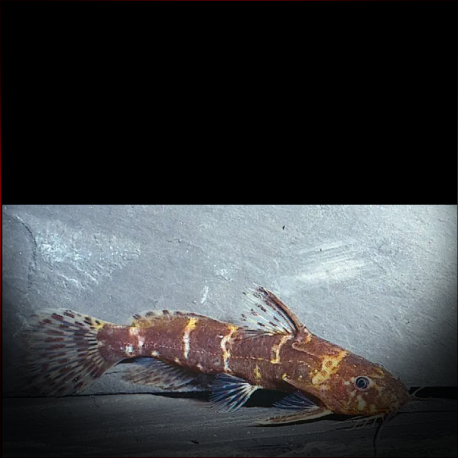More info
Datasheet
| Minimum Tank Size | 55 litres / 14.53 US gallons |
| Maximum Size | 8.8cm / 3.46inches |
| Temperature | 22°C / 71.60°F - 26°C / 78.80°F |
| Hardness | 10-15ºdH |
| pH | 6.7-7.5 |
General Description
Microsynodontis Batesii, commonly known as the Dwarf Synodontis or African Bumblebee Catfish, is a species within the Mochokidae family. It is distinguishable by its rounded or slightly forked caudal fin and fixed eyeball, unlike other related genera. With a maximum size of 8.8cm, this species may exhibit a spotted or reticulated patterning in its juvenile form that transitions into characteristic barring as it matures.
Aquarium Setup
To create an optimal environment for M. batesii, a dimly lit aquarium with soft substrate, rocks, driftwood, and roots for hiding places is recommended. The lighting should be dim, and while appreciated, plants are not essential. Water conditions should maintain a pH range of 6.7-7.5, hardness of 10-15°dH, and a temperature between 22-26°C (see table).
Behaviour
Dwarf Synodontis are peaceful and can coexist with various compatible species such as African tetras, dwarf cichlids, and small mormyrids. They are shy and should not be housed with aggressive or very vigorous fish. M. batesii tolerates conspecifics well and can be kept in groups without issues.
Feeding and Diet
In captivity, M. batesii accepts a diet of frozen, live, and dried foods. Providing a varied diet will ensure their nutritional needs are met and support their overall health.
Reproduction & Dimorphism
Reproduction of M. batesii has not been documented in aquarium settings. Sexual dimorphism in this species is noticeable in adult males, characterized by an elongated caudal fin and small body bristles. Additionally, differences in genital papillae between the sexes are observed, with the male's papilla being thinner and more pointed than the female's.
Habitat and Distribution
Microsynodontis Batesii is recorded in the Democratic Republic of Congo, Gabon, and Cameroon, primarily inhabiting the Congo and Ogowe river basins. While there may be occurrences of this species in different locations, confirmation of these occurrences as separate species is pending further research.

